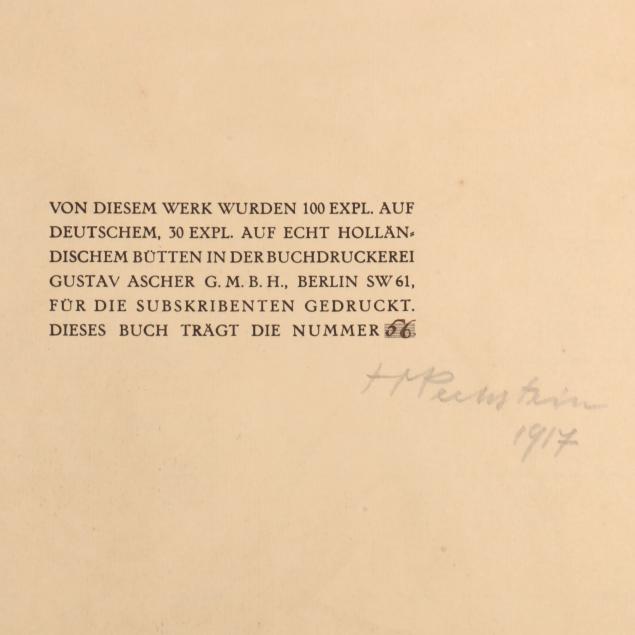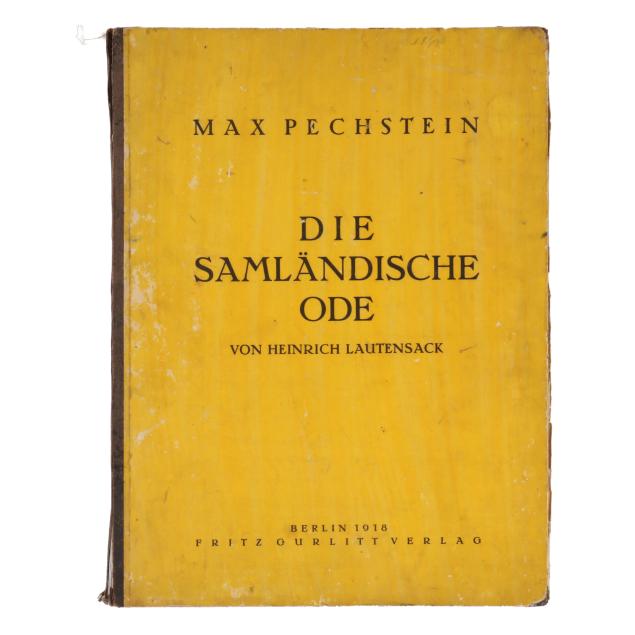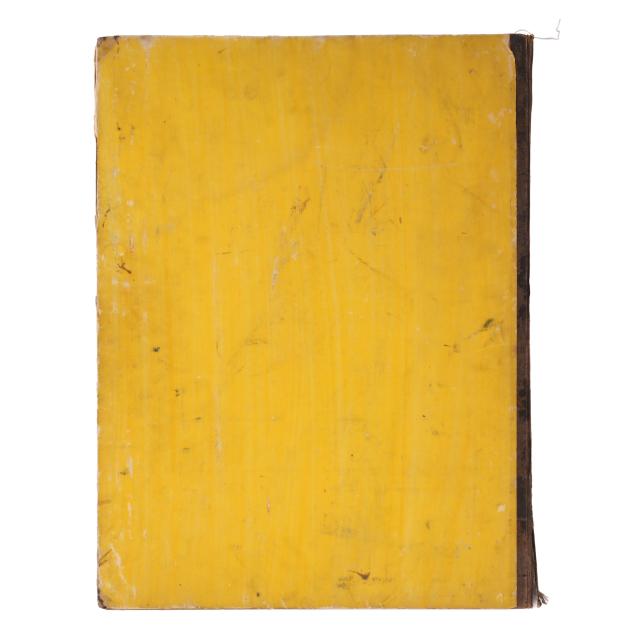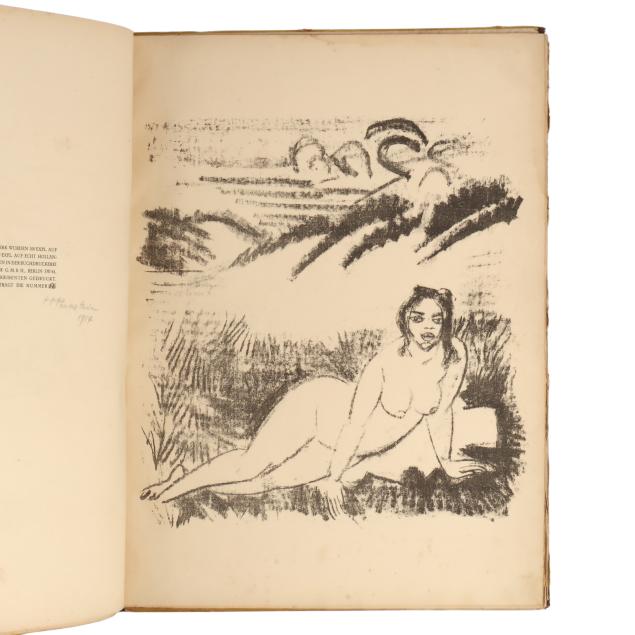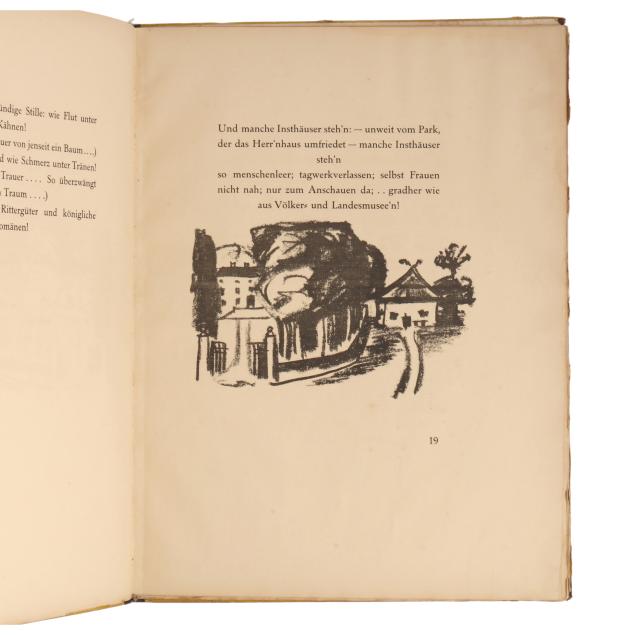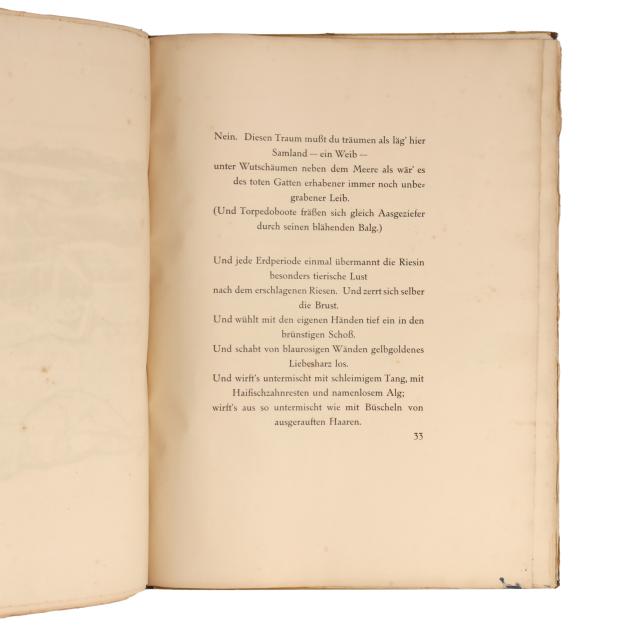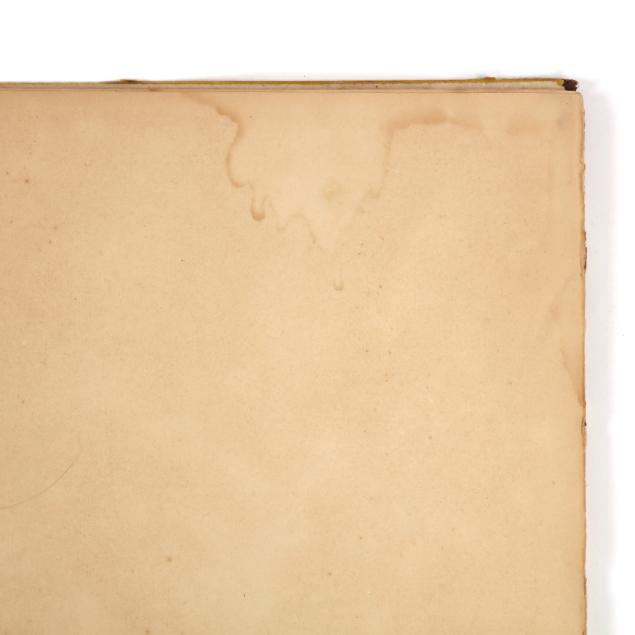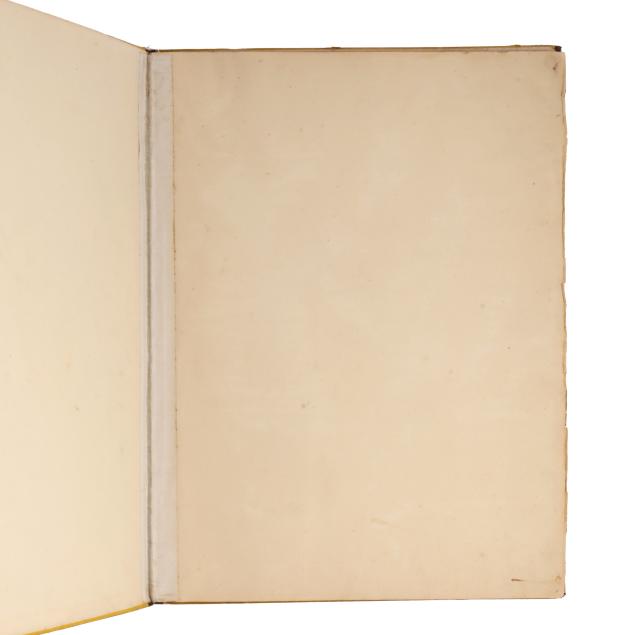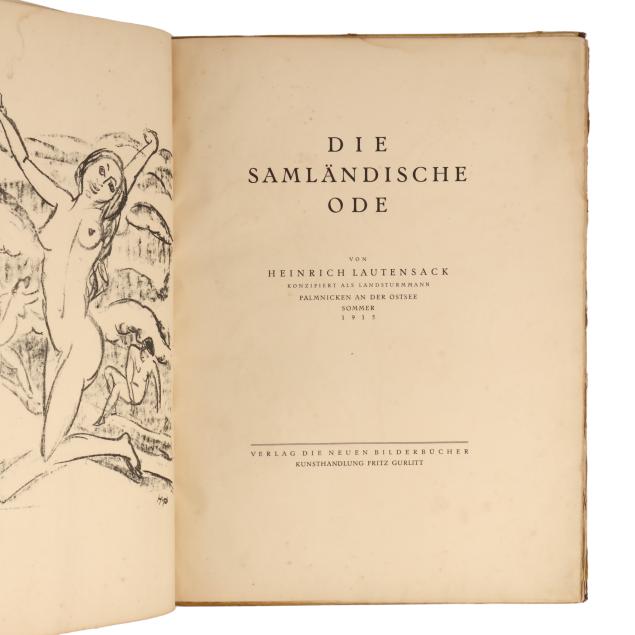
Lot 4051
Extremely Scarce Copy of Die Samländische Ode (The Samland Ode), Signed by Max Pechstein
Explore more items like this one.
Visit our Historical Department Historical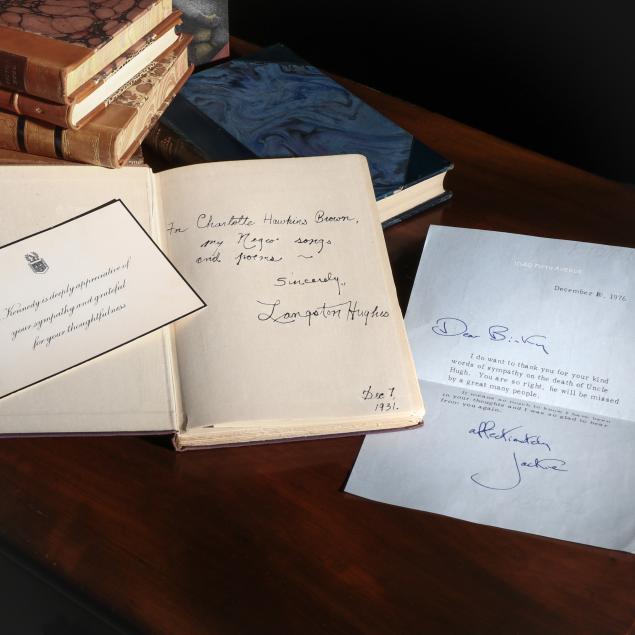
Lot Details & Additional Photographs
20 1/2 x 15 1/2 in.
Private Collection, Chapel Hill, North Carolina
According to Worldcat, this book is found in only (13) institutions worldwide including only (6) in the U.S. It is extremely rare at auction, with only one selling in the past decade and with seemingly no copies appearing in U.S. auction records.
Max Pechstein (1881-1955) was a German Expressionist and part of Die Brücke from 1906 until his dismissal from the Dresden-based group of artists in 1912. He is best known for creating paintings and prints featuring landscapes and figures. Like many other early modernists, he found inspiration in a variety of non-European cultures, and spent time traveling to the Baltic Coast and the South Seas. These influences are evident in his illustrations for The Samland Ode, an Expressionist poem that Lautensack wrote while traveling in the area of Samland Peninsula in the Baltic Coast while serving in the Germany army.
Boards scuffed and marked, with edge wear, a couple of faint damp stains, corners rubbed with loss of linen, and a name in pencil at the top edge of the upper board; spine fragile with tears in linen and cracking at joints revealing separation of backstrip, with boards loose but still attached; hinges reinforced; interior with light toning and scattered light foxing, occasional creasing and small stains and marks including a few areas with blue paint, and larger areas of damp staining concentrated in one corner; a few leaves with lightly frayed edges or small tears, a couple of leaves with minor separation at head, and a few with possible small areas of professional repair at the edge.
